At present orthodontics is popular in teenagers as to correct irregularities in teeth alignment and face structure. In fact, the orthodontics can be done at all ages, not only for teenagers. It is important to gain information and understand the real purpose of orthodontics by consulting and planning the treatment with a professional dentist in the orthodontic field in order to gain the highest benefit for the treatment.
- Get good teeth alignment.
- Achieve facial balance.
- Get efficient chewing force.
- Reduce caries and gingivitis from improper teeth and gum cleaning due to malposition of the teeth.
- Reduce unclear pronunciation due to teeth gaps.
- Adjust to a suitable position before fitting denture or implant.
- Avoid attrition from improper occlusion.
-
- Consult with a professional dentist in the orthodontic field.
- Orthodontist examines occlusion.
- Take Panoramic and Cephalometric x-ray.
- Impression taking of your teeth and jawbone.
- Planning treatment with orthodontist.
- General dentist examines the oral hygiene. (Teeth & gums should be healthy before starting Orthodontic treatment)
-
*** Check list of orthodontists certified by Thai Association of Orthodontists at www.thaiortho.org
Orthodontics has no age barrier. However, tooth movement rate in adults is slower than in children and there is a chance for gingival recession which depends on the strength of the bone support and oral hygiene during orthodontics.
Children should have dental checkup regularly. If there is any sign of malformation of the jaw that severity may occur, the orthodontics may start treatment at 8 years old in specific areas while the orthodontics can be completed after the last primary tooth at the age of 10-12. If there is no malformation of the jaw, the arrangements can be corrected after the last primary tooth.
Selection of orthodontic treatment appliance depends on the malformation of alveolar bones, occlusion and alignment which can be categorized as follows:
Removal appliance
-
- Appliance supporting teeth movement
Active plate: spring or screw that supports teeth movement.
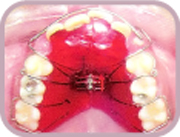
Invisallign: a series of Clear removable aligners.

2. Appliance changing or directing growth of jawbones: Myofunctional Appliance

3. Appliance retaining teeth after arrangement and without force to the teeth: Retainer
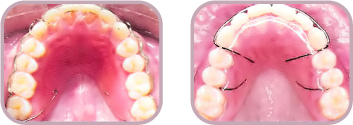
Fixed appliance
1. Metal Bracket

2. Self Ligate Bracket
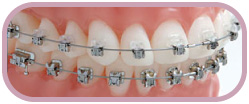
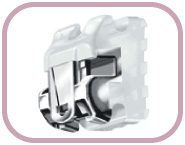
3. Resin Bracket
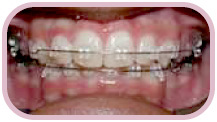
4. Crystal Bracket

5. Brius
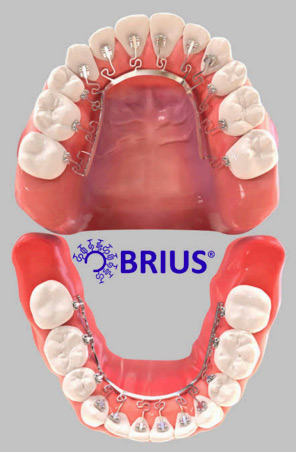
In addition in some cases Mini-Implants may be used as the ointments for controlling the movement to longer space and when the tooth abutment does not work properly.
Bracket and tube will be bond attached to the tooth surface with grooves for the wire. elastics the small rubber bands work like chain pulling bracket to move along the wire line that make the teeth move.
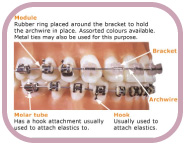
The bone will be pressed while the teeth are moving. There may be some pains and hyper-sensitive teeth. That is because the blood vessels in the areas are also pressed. But after 4-5 days the pains will be improved. The pressure of alveolar bone will result to a resorption and the teeth move to the required direction. In the meantime, the opposite area gradually produces new bone whilst the teeth may have some mobility which is considered as normal for the orthodontics.
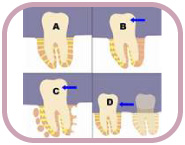
Tips: Chewing soft foods the day after adjusting the appliances will help improve the pain as well as frequent and slow chewing helps moving the teeth at pressed area and stimulating the blood circulation.
The duration of orthodontics depends on the irregularity of occlusion. Generally fixed orthodontic spends about 1-3 years and it needs to keep the appointment every 4-6 weeks to adjust the appliances.
There are other factors affecting orthodontic such as:
- Muscles resist the teeth movement such as bruxism, macroglossia and tongue pushing teeth during talking and swallowing
- Growth rate of jaws
- Cooperation in keeping appointment with orthodontist
- Cooperation in putting on rubber bands or other appliances
- Maintaining oral hygiene caring
Orthodontics and jaw surgery will be an option when irregular occlusion occurs together with the irregularities of jawbones such as:
Buck-teeth
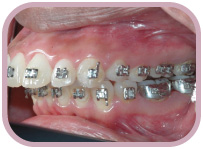
Short chin
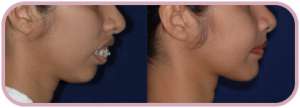
Long chin

Hypertrophy of gum
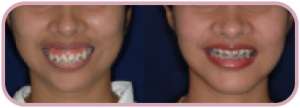
You should have a treatment plan with a professional dentist team .Oral & Maxilla – facial surgeon, orthodontist and General dentist.
There are 3 process of treatment
1. Presurgical orthodontics: To move the tooth of each jaw in proper alignment and in relation with the bone. However, the occlusion of upper and lower teeth will not yet be in relation and it needs about a 1-2 years.

2. Orthognathic surgery: Surgery of the jawbone and recovery in hospital for about 1-4 days and rehabilitate at home for 2-4 weeks.
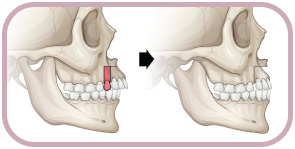
3. Postsurgical orthodontics: To complete the occlusion for approximately 6 months.
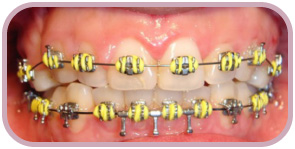
- Must be careful to avoid hard and sticky foods that can damage the braces. Damaged braces will cause treatment to take longer.
- Teeth and braces would need to be cleaned more frequently every day. Follow the recommendation how to clean the teeth and braces to maintain good oral health.
- Successful orthodontic treatment requires a consistent, cooperative effort by both orthodontist and patient, together planning and keep appointments as scheduled are important.

